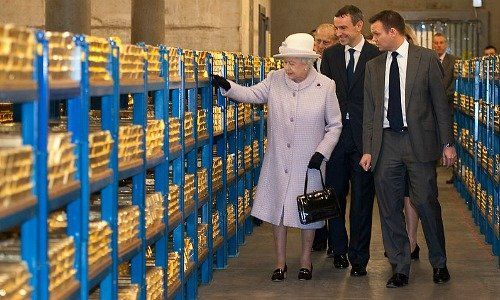Central banks are turning back to gold purchases in line with a century of practice between 1870 and 1970. This has restored the yellow metal as a central element of monetary management.
Annual net gold purchases of 350 tonnes a year by world central banks over the past eight years have returned to the 100-year average up to 1970 – reflecting the metal’s renewed attractiveness as a safe haven asset in an environment of uncertainty and low or negative interest rates, according to a report from financial research group OMFIF published on Monday.
The document entitled «The Seven Ages of Gold» contains detailed statistics plotting long-run changes in central banks’ policies on buying and selling gold over seven distinct periods during the past two centuries, each lasting an average of around 30 years.
A Bedrock of Most Countries’ Foreign Reserves
The latest «Rebuilding Period VII» has been underway since the financial crisis in 2008. In these eight years, central banks in both developed and developing countries have shown a new fondness for the yellow metal, rebuilding gold’s importance as a bedrock of most countries’ foreign reserves.
Central banks have been net bullion buyers every year since 2008, adding more than 2,800 tonnes or 9.4 percent to reserves. Developed countries (accounting for the lion’s share of total official holdings) have been conserving stocks, while developing countries led by China and Russia have been building them up.
A Powerful Change
This is the longest protracted spell of gold accruals since 1950-1965, when central banks and treasuries acquired a net total of more than 7,000 tonnes during the economic recovery after the second world war.
Developments since 2008 mark a powerful change from the «Sales Period VI» in 1998-2008, when central banks, particularly in developed countries including the U.K., the Netherlands and Switzerland, were unloading bullion holdings.
When Gold’s Role Was in Limbo
This is also in sharp contrast to the «Demonetisation Period V» in 1973-1998, when gold’s role was in limbo after it was officially phased out of the monetary system in 1971-1973.
Central bank gold transactions have often been somewhat disassociated from the gold price. Central banks were net sellers over Periods V and VI, four decades of fluctuating but generally rising bullion prices.
Behind the Price Recovery
The latest period since 2008 has been a time of sharp price swings in the $1,000 to $1,600 per ounce range, but the eight-year switch to central bank purchases appears to have been a factor behind the price recovery since 2015.
Even after the 2,800 tonnes of purchases over the past eight years of Period VII, total official holdings – at 32,805 tonnes as of mid-2016 – are still more than 5,500 tonnes below the 1965 peak of 38,347 tonnes.
The Rising of a Multipolar World Economy
After the rises and falls of the post-war period, total gold holdings are back to the levels of the early 1950s.
But there has been a big shift over the past 70 years in the distribution of gold away from former near-monopoly holder the U.S. treasury towards European countries and, latterly, developing nations – symbolising the growth of a multipolar world economy.

























